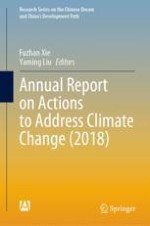2022 | OriginalPaper | Buchkapitel
14. The Effects of Different Carbon Prices on the International Competitiveness of the Industries Covered by China’s National Carbon Market
verfasst von : Shaozhou Qi, Guangxing Yang
Erschienen in: Annual Report on Actions to Address Climate Change (2018)
Verlag: Springer Nature Singapore
Aktivieren Sie unsere intelligente Suche, um passende Fachinhalte oder Patente zu finden.
Wählen Sie Textabschnitte aus um mit Künstlicher Intelligenz passenden Patente zu finden. powered by
Markieren Sie Textabschnitte, um KI-gestützt weitere passende Inhalte zu finden. powered by
